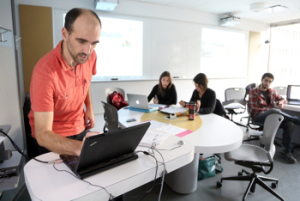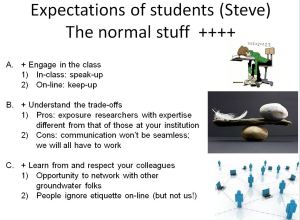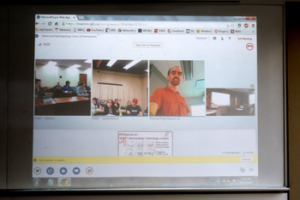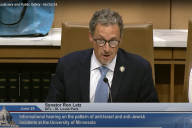You have /5 articles left.
Sign up for a free account or log in.
Last term I co-taught a graduate class in advanced groundwater hydrology with Grant Ferguson

The author teaching in an active learning classroom. Photo by Owen Chapman, courtesy of Faculty of Engineering, McGill University.
Students and professors simultaneously meet in real classrooms at each university and connect as a video conference. Students collaborate on projects across universities and each professor leads instruction for part of the term and participates in all classes.
We use a variety of software tools for blended learning


Connecting with other classrooms using video conferencing. Photo by Owen Chapman, courtesy of Faculty of Engineering, McGill University.







